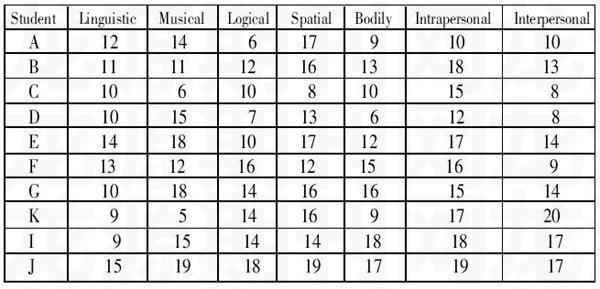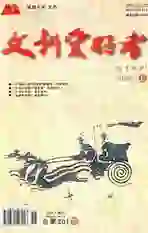Application of Multiple-intelligence Theory in Classroom Teaching
2009-01-25王珺
王 珺
【Abstract】Since Howard Gardener introduced the theory of multiple-intelligence, there have been attempts to apply it in the real classroom teaching. The essay has formulated a teaching plan and explored the possibility to put this theory into practice.
【Key words】Howard Gardener; Multiple-intelligence Theory; Teaching plan
【中图分类号】 G642 【文献标识码】 C【文章编号】1671-1270(2009)6-0021-01
In 1983 American psychologist Howard Gardener first introduced the theory of multiple-intelligence in his Frames of Mind. He argues that peoples intelligence can exist in many different forms. In his multiple-intelligence theory there are eight diverse aspects, i.e. linguistic, musical, logical, spatial, bodily, intrapersonal and interpersonal. Needless to say this theory has provided valuable guidance to the practical classroom teaching. To further discover the possibility of applying the theory of multiple-intelligence in the practical field, we have invited a group of students (10 students) to do a questionnaire——Multiple Intelligence Inventory formulated by Mary Ann Christison.
The following are the statistics gathered from study.

From the above table, we may easily find the diversities of intelligence among students; therefore it is essential for us to inspire different intelligence within students. However, how we can do it? Take the above 16 students as the subjects, we formulate a teaching plan as follows.
Backgrounds:
Students: 16 students with different intelligence
Teaching Objectives:
Apply the theory of multiple-intelligence in classroom
teaching. Explore possible teaching methods to further stimulate students multiple intelligence.
Teaching Contents:
Film: Forrest Gump
Teaching Aids:
PPT, computer, blackboard, chalk
Teaching procedures:
Step 1: movie appreciation.
Step 2: music (develop the musical intelligence).
Student E and G are strong in musical intelligence; therefore the teacher may invite them introduce the music part in the movie. Let these two students help other students to appreciate the music pieces in the movie. Pay special attention to student C and K who are a bit weak in musical intelligence.
Step 3: costumes and shooting techniques (develop the spatial intelligence).
Since most student are strong in spatial intelligence, for the study of this section the teacher may try to get as many students involved in the classroom activities as possible. All the students may play a game together, speaking out the possible costume features and shooting techniques they have found in the movie one after another in a sequence without stop.
Step 4: plot study (develop logical intelligence).
Encourage students to work out the plot of the movie and write it down. Give special attention to student A who is weak in logical intelligence.
Step 5: theme study (develop intrapersonal intelligence).
Give students a couple of minutes to think over the
themes reflected in the movie, and then invite students to express their opinions out. Since most students have got high marks in this area, the teacher may give as many opportunities to every student as possible.
Step 7: further study (develop interpersonal intelligence).
The teacher puts forward some open questions concerning the film, and then groups the students in 3 different groups to have inner-group discussions. Student K, I, and J who are strong in interpersonal intelligence should be evenly distributed in 3 groups.
Step 8: role-play or movie dubbing (develop bodily intelligence).
The teacher may stimulate student D who is weak in bodily intelligence more in this section and give student G, I and P more opportunities to perform in role-plays so as to further strengthen their bodily intelligence.
Optional activities and homework (develop the linguistic intelligence):
Help students to summarize the useful language points and daily expressions in the movie and learn to use them in real life.
The above teaching plan is just an example to apply the theory of multiple-intelligence in authentic teaching. However, from this example we may draw some hints on the possibility of using MI theory to explain and promote teaching methodology. It is advisable that in real classrooms teachers be aware of students different intelligence and make an effort to meet the needs of different learners.
【作者简介】王珺(1988—),山东威海人,中南大学外国语学院。
